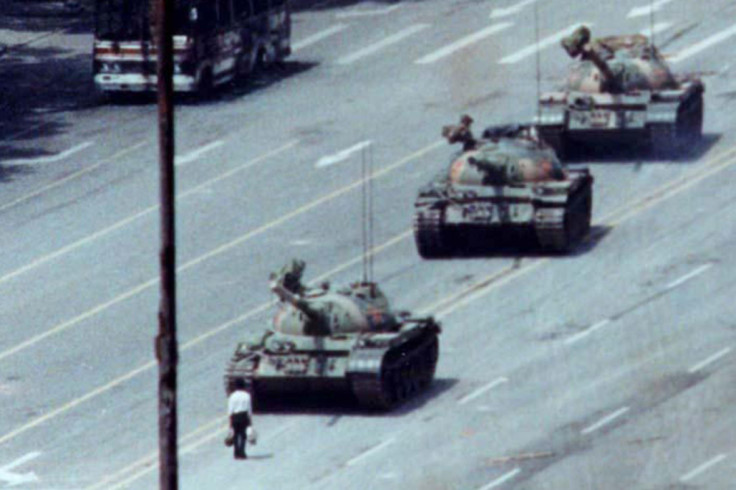Tiananmen Square 25th Anniversary: Timeline of a Massacre

In Tiananmen Square 25 years ago, what started as a student-led protest ended in a bloodbath, with up to 300 people estimated to have been killed by government troops.
However, due to the massive censorship applied by China following the massacre, the exact number of victims are to this day unknown.
IBTimes UK looks at events that led to the massacre:
15 April 1989
Former General-Secretary Hu Yaobang, a strong supporter of human rights and social reforms, dies of heart attack. His death sparks a wave of protests by students who demand social reforms and criticise the corruption and the repressive regime.
16-21 April
Students gather around the Monument to the People's Heroes at Tiananmen Square, in the capital Beijing, to mourn Hu. The gatherings feature speakers from various backgrounds delivering public orations commemorating Hu and discussing social problems.
Police try to disperse the students.
22 April
Tens of thousands of students converge in Tiananmen Square as Hu's memorial service is held.
The gathering come in spite of an earlier warning by the city's government that protesters risked severe punishment.
26 April
In order to curb the protests, the party's official newspaper People's Daily issue a front-page editorial branding the student movement as anti-party. The article enrages the students, who organise a mass demonstration.
27 April
Between 50,000 –100,000 students from all Beijing universities march to Tiananmen Square, breaking through lines set up by police. The rally receives widespread support and the government is forced to allow a meeting with student representatives. In the meantime, the protests continue.
13 May
Students go on a hunger strike, blaming the government for its failure to dialogue with students' representatives.
15 May
Soviet leader Mikhail Gorbachev arrives in Beijing for the first Sino-Soviet summit in 30 years. The protests force Chinese authorities to cancel plans to welcome him.
17 May
Zhao Ziyang, the official head of the Communist Party, visits the students in Tiananmen Square. He is accompanied by Li Peng, his hardline rival, and Wen Jiabao, China's future premier. Ziyang concludes the meeting by saying: "We have come too late."
20 May – 1 June
The government declares martial law in several districts of Beijing as the protests continue. Protesters block troops' convoys, setting up barricades on streets.
After weeks of occupation of Tiananmen, some intellectuals launch a new hunger strike to revive the protests.
2 June:
Communist Party elders approve the decision to use force to quell the dissent.
3 June
Thousands of soldiers move towards the centre of Beijing, opening fire on unarmed protesters, killing dozens.

4 June
Thousands of angry residents attack the soldiers who open fire again. The party publishes an editorial saying the army would severely and mercilessly punish "lawless people who plan riots and disturb social order".
5 June
The army takes over Beijing. While tanks move through the streets of the capital, a young unarmed man blocks a column of tanks heading to Tiananmen. This gesture becomes one of the most iconic symbols of the Tiananmen Square massacre. To this day, the fate of the brave man remains unknown.
9 June
Leader Deng Xiaoping publicly praises the army for their efforts to curb the protests. He also accuses the students of trying to overthrow the regime.
© Copyright IBTimes 2025. All rights reserved.






















